How much gold is in the James Webb Space Telescope?

Its 18 large, segmented golden mirrors aren’t even the whole story. But how much gold is really in there?
“Hey, if our eyes could access the infrared part of the light spectrum, the sky would be green and trees would be red. Some animals see in completely different ways, so who knows what colors look like to them. Nothing is really how we perceive it.” –Wendy Mass
If you want to image the Universe as deeply and powerfully as possible, you need your telescope to do four things:
- Be as large as possible, to gather the greatest amount of light and obtain the highest resolutions that you can.
- Go to space, so that you eliminate the interference and turbulence from Earth’s atmosphere.
- To reflect and focus as close to 100% of the light you gather into the instruments, where it can become useful data.
- And for that telescope to be sensitive to light of the right wavelengths to see the most distant objects ever.
The James Webb Space Telescope intends to do all of these, and it’s the last two that makes gold such a perfect material to coat them in.
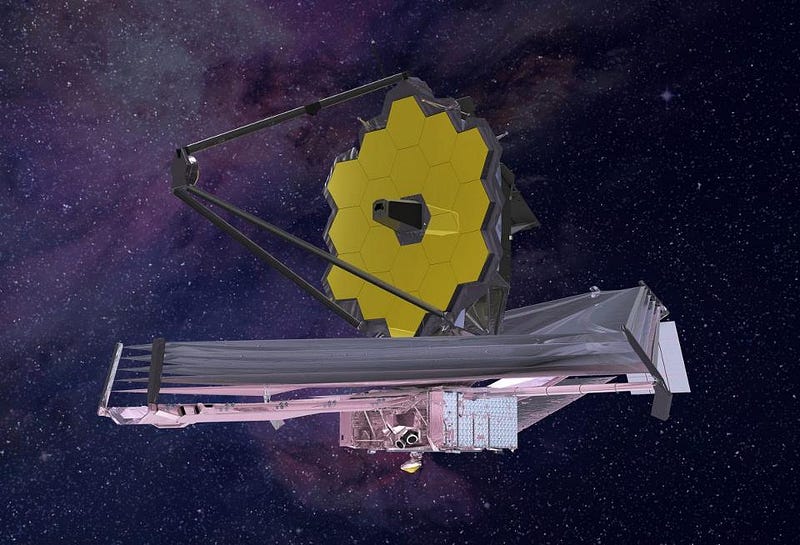
These mirrors, first off, are huge. There are 18 of these hexagonal-shaped mirrors, with each one spanning a diameter of 1.32 meters (4.3 feet). The diameter of that mirror is limited by the size of the rocket it will be launched in, but these mirrors will unfold after launch to create a much larger segmented mirror. When stitched together in a honeycomb pattern, they form an effective surface that will be 6.5 meters (21.5 feet) in diameter, with seven times the light-gathering power of the Hubble Space Telescope. It will be launched into space to the L2 Lagrange point in October of 2018, some 1.5 million kilometers more distant than Earth from the Sun.
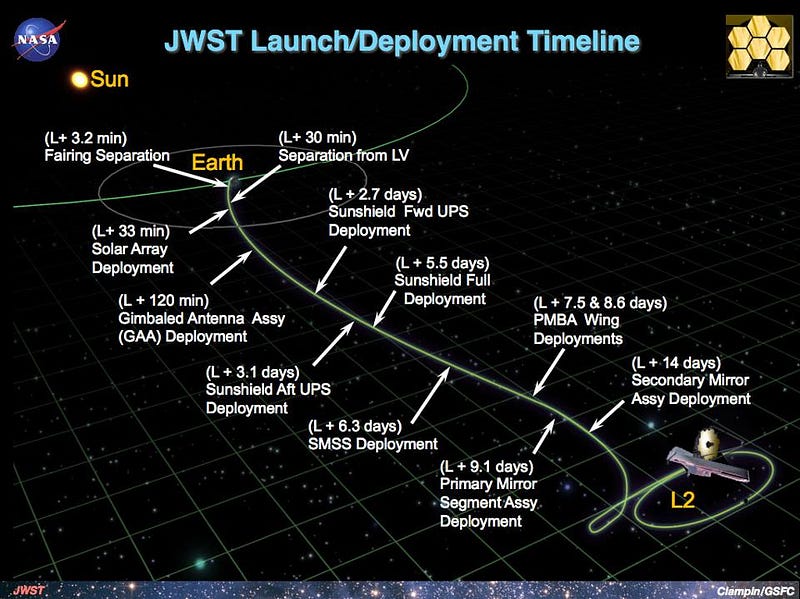
But it’s also not designed to image visible light! Human vision ranges from 400 (violet) to 700 (red) nanometers in wavelength, with shorter wavelengths entering the ultraviolet and longer ones probing the infrared. Hubble was spectacular at measuring the optical part of the spectrum, and extending into the near-UV and the near-IR as well. Below, you can see the most distant galaxy that Hubble has ever imaged. It is invisible in ultraviolet and visible light, and can only be seen at wavelengths greater than 1,000 nanometers. Why? Because the Universe is expanding, and light that travels from very far away has its wavelength stretched by the expansion of the Universe.
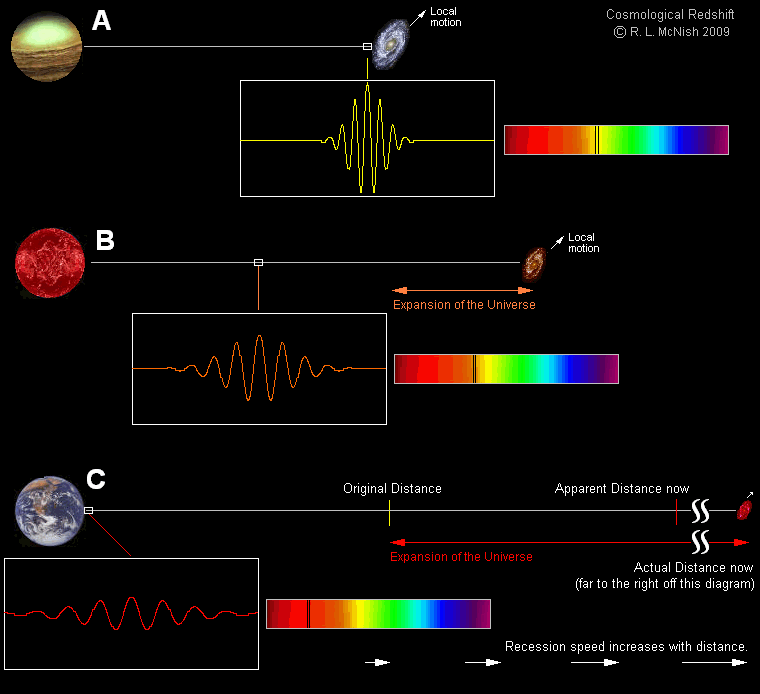
Hubble’s ability to see into the infrared peters out at about 1,600 nanometers, fundamentally limiting how deep it can see into the early, distant Universe. But James Webb is designed to be cooled by its five-layered sunshield, meaning that the mirrors themselves will be held at temperatures of around 60–70 K, cold enough to have nitrogen become a liquid. On top of that, James Webb will be outfitted with additional cryogenic cooling, allowing it to reach temperatures as low as 7 K, meaning it can see to a maximum wavelength of 30,000 nanometers! This will be far enough to image the distant Universe to as far back as the first galaxies and even the first stars. At these wavelengths, the expansion of the Universe will help our cause, not hurt it.
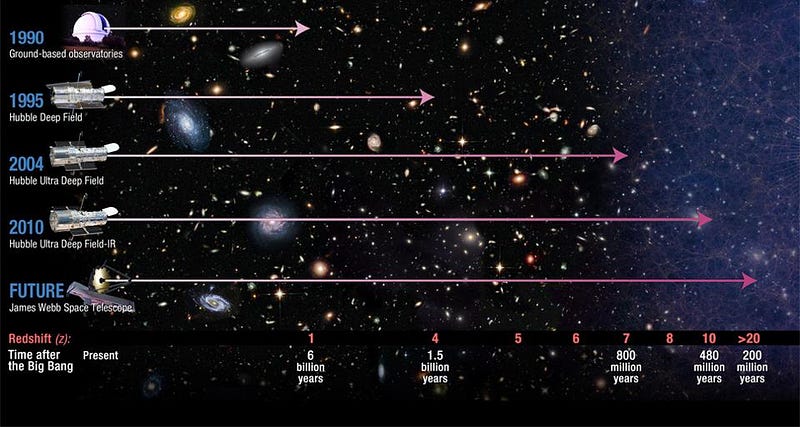
So what do we make these mirrors out of? If you said, “gold,” I’ve got some sad news for you. Gold, being one of the three most highly conductive materials of all (along with silver and copper), expands and contracts a great deal with temperature changes. Because the surface that the 18 mirrors create in tandem needs to be smooth to a precision of around 20-to-22 nanometers, you need a material that exhibits almost no thermal expansion at cryogenic temperatures. The mirrors are not made of gold all the way through, but are rather made almost exclusively of beryllium. Each mirror is cast as a giant, heavy beryllium “blank” that’s perfectly round, and then it’s machined into a hexagonally-shaped mirror. Additionally, most of the mass of the back is machined out, removing 92% of the material. Each initial 250 kg (551 lb) blank comes to just 21 kg (44 lbs) in the end. The entire telescope will weigh just 55% of what Hubble did.
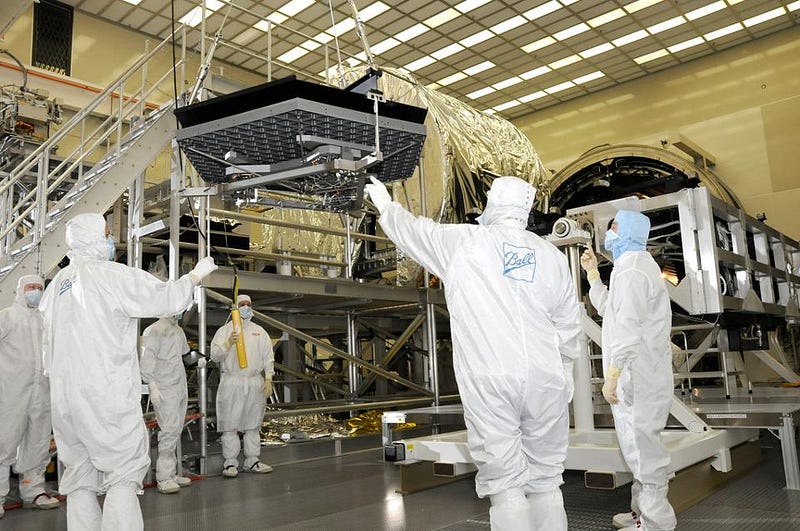
These mirrors are machined and polished in multiple stages, since they need to both account for the “sag” that Earth’s gravity creates and the fact that these mirrors will have slightly different properties at operating temperatures than at room temperatures. You first do a rough polish, then you bring it to cryogenic temperatures and send it back to the polisher. The important part is to have this as-close-to-perfectly-smooth surface when your telescope is cooled, so you manufacture and polish it with some imperfections at room temperatures to get that desired surface at the temperature James Webb operates at. Only then, once the beryllium is completely polished, do you apply the gold coating.
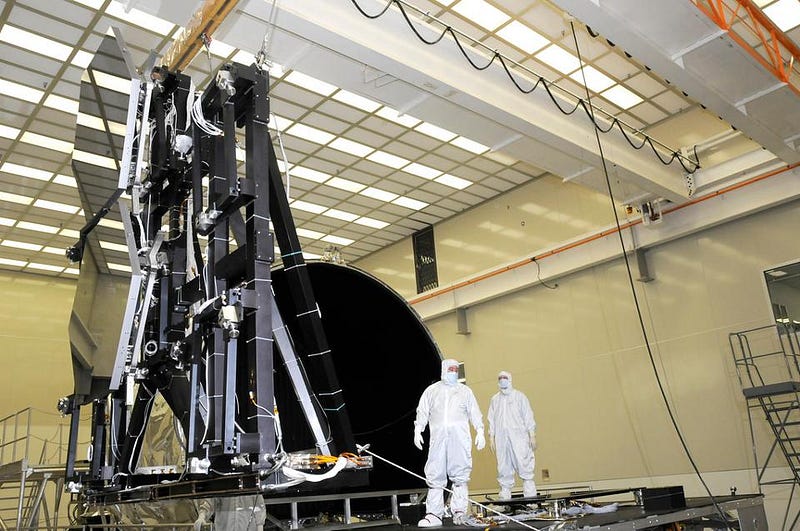
Gold is applied because it significantly increases the reflectivity of the telescope in infrared light. The coating must be thick enough to cover the mirror entirely, but thin enough to not affect the mirrors at all in terms of expansion/contraction/deformation when the temperatures change. The way to put the gold coating on is through a process known as vacuum vapor deposition. You place the mirrors inside a vacuum chamber, evacuating the air entirely, and then you vaporize a small amount of gold and inject it into the chamber. Areas you don’t want coated (like the back, which will need struts, actuators and flexures attached to them to help focus the mirrors) are masked off, but the smooth, polished surface gets gold atoms deposited on it. This process continues until the gold is 100 nanometers thick.
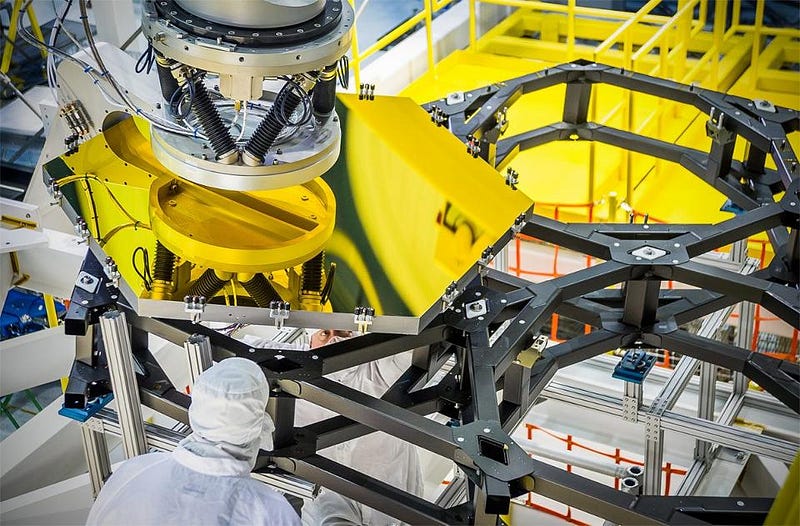
That’s not a lot of gold at all! Each gold atom is 0.166 nanometers in diameter, so the average thickness of the gold coating on the mirrors is a mere 600 atoms thick. When you spread that out over the entire surface of James Webb’s mirrors — including all 18 segments and the secondary mirror as well — you need to cover about 25 square meters (269 square feet) of area with those gold atoms. The density of gold is about 19.3 grams-per-cubic-centimeter, and if you do the math, you’ll find that it takes about 2.5 cubic centimeters of gold to cover the entirety of the mirrors. For the entire James Webb Space Telescope, that’s just a shade over 48 grams of gold.
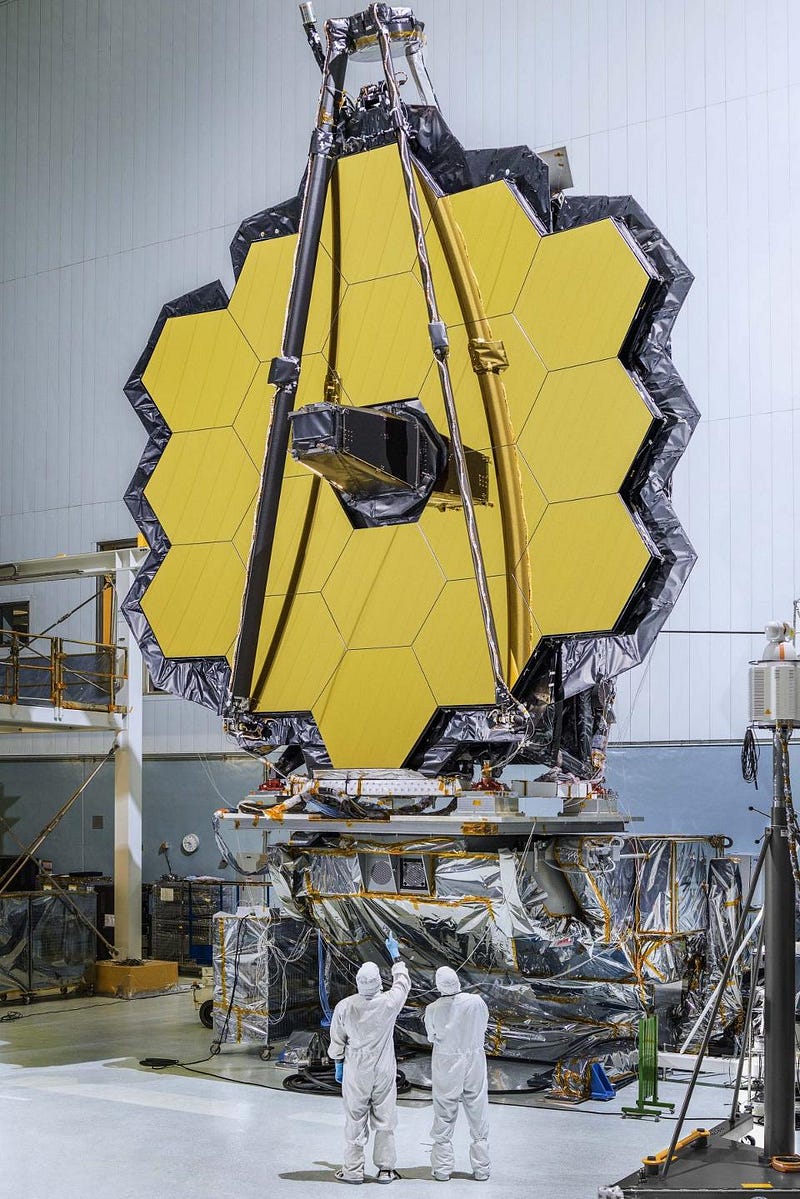
Because gold is very soft and malleable, a thin layer of amorphous, transparent glass is applied atop it, to protect the deposited particles and the highly reflective surface. There are a whole slew of component systems that need to come together to make even the mirrors work to focus the light into the instruments properly, and coating these beryllium mirrors in a tiny amount of gold is just one tiny step in the process. Nevertheless, the gold is the most visually striking feature of the James Webb Space Telescope, even though there’s so little of it used. For under two ounces of gold — right around $2,000 worth today — you can coat the most powerful space telescope ever designed.
It’s not how much gold you use, but rather how you use it, that makes this piece of space history so useful and valuable to scientists!
Ethan Siegel is the author of Beyond the Galaxy and Treknology. You can pre-order his third book, currently in development: the Encyclopaedia Cosmologica.





